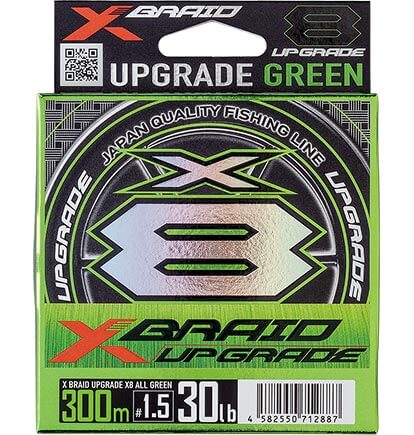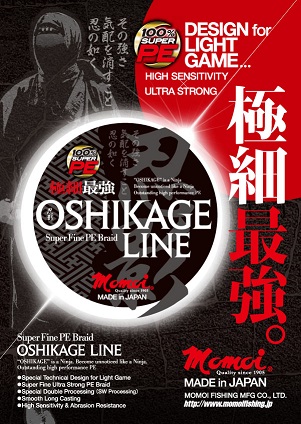
Fishing enthusiasts often search for the best gear. One essential item is the Japanese braid line.
Japanese braid lines are renowned for their strength and durability. They have become a favorite among anglers worldwide. These lines offer a unique blend of power and flexibility, making them ideal for various fishing conditions. Japanese manufacturers use advanced technology to ensure high quality.
The result is a line that performs well in both fresh and saltwater. Understanding the benefits of Japanese braid lines can improve your fishing experience. This article will explore why these lines are superior and how they can enhance your fishing adventures. Whether you’re a beginner or a pro, learning about Japanese braid lines can be a game-changer for your fishing kit. Dive in to discover more about this exceptional fishing line.

Credit: www.jpfishingtacklenews.com
Contents
- 1 Introduction To Japanese Braid Line
- 2 Benefits Of Japanese Braid Line
- 3 Types Of Japanese Braid Line
- 4 Choosing The Right Japanese Braid Line
- 5 How To Spool Japanese Braid Line
- 6 Knot Tying With Japanese Braid Line
- 7 Maintenance And Care Tips
- 8 Top Brands Of Japanese Braid Line
- 9 Frequently Asked Questions
- 10 Conclusion
- 11 About the Author
Introduction To Japanese Braid Line
Japanese Braid Line has become a favorite choice among anglers worldwide. Its superior strength, sensitivity, and durability make it stand out. Many fishermen prefer it for its efficiency and reliability during fishing trips.
History And Evolution
The history of Japanese Braid Line dates back several decades. Early fishing lines were made from natural materials like cotton and silk. These lines were strong but lacked durability in water. In the 1950s, synthetic materials like nylon started replacing natural fibers. This change marked the beginning of modern fishing lines.
In the 1980s, Japanese manufacturers began developing braided lines. They used advanced technologies to weave multiple strands of synthetic fiber. This innovation resulted in lines that were thinner yet stronger than ever before. Over the years, Japanese Braid Line has evolved with continuous improvements in materials and weaving techniques.
Popularity Among Anglers
Japanese Braid Line is popular for several reasons. First, it offers excellent strength-to-diameter ratio. This means anglers can use thinner lines without sacrificing strength. Thinner lines allow for longer casts and better lure action.
Second, the sensitivity of Japanese Braid Line is unmatched. Anglers can feel even the slightest bites, increasing their chances of a successful catch. The line’s minimal stretch also helps with quick and effective hook sets.
Third, Japanese Braid Line is highly durable. It resists abrasion and lasts longer than many other types of fishing lines. This durability ensures that anglers can rely on it in various fishing conditions.
| Feature | Advantage |
|---|---|
| Strength-to-Diameter Ratio | Thinner lines without sacrificing strength |
| Sensitivity | Feel even the slightest bites |
| Durability | Resists abrasion and lasts longer |
In summary, Japanese Braid Line has a rich history and continues to be a top choice for anglers. Its unique features make it an essential tool for both amateur and professional fishermen.

Credit: momoifishing.jp
Benefits Of Japanese Braid Line
Japanese braid line is highly sought after by anglers worldwide. Its unique properties make it an excellent choice for fishing. Below, we will explore the key benefits that make Japanese braid line stand out.
Strength And Durability
One of the primary benefits of Japanese braid line is its strength. This type of line is crafted using advanced materials and techniques. It offers exceptional tensile strength, which helps you catch larger fish without the line snapping.
Durability is another significant advantage. Japanese braid lines are designed to withstand wear and tear. They resist abrasion from rocks and other underwater obstacles. This ensures that the line lasts longer and maintains its integrity over multiple fishing trips.
Sensitivity And Thin Diameter
Sensitivity is crucial for detecting bites and changes in underwater conditions. Japanese braid line excels in this area. Its thin diameter allows for better feel and response. You can sense even the slightest nibble on your bait.
The thin diameter of Japanese braid line also provides several benefits. It reduces water resistance, allowing for longer casts and more accurate placement. Additionally, it allows you to spool more line onto your reel, giving you a better chance to catch fish at greater depths.
| Feature | Japanese Braid Line | Other Lines |
|---|---|---|
| Strength | High | Medium |
| Durability | High | Low |
| Sensitivity | High | Medium |
| Diameter | Thin | Thick |
In summary, Japanese braid line offers exceptional strength, durability, sensitivity, and thin diameter. These features make it a top choice for many anglers.
Types Of Japanese Braid Line
Choosing the right Japanese braid line can be crucial for your fishing experience. Japanese braid lines are known for their quality and strength. They come in various types to suit different fishing needs. In this section, we will explore the two main types of Japanese braid lines: four-strand braid and eight-strand braid.
Four-strand Braid
The four-strand braid is a popular choice among anglers. It consists of four intertwined strands of fiber. This type of braid is known for its durability and cost-effectiveness. Here are some of its features:
- Durability: The four strands provide a strong and tough line.
- Cost-effective: Generally cheaper than eight-strand braids.
- Sensitivity: Good sensitivity allows you to feel even small bites.
- Thin diameter: Lower visibility in water.
Many anglers prefer four-strand braid for its strength and affordability. It’s suitable for various fishing techniques, making it a versatile option.
Eight-strand Braid
The eight-strand braid offers a smoother and more advanced option. It consists of eight intertwined strands of fiber. This results in a more refined and high-performance line. Key features include:
- Smoothness: Eight strands create a smoother surface.
- Castability: Easier to cast over long distances.
- Quietness: Less noise when reeling in.
- High strength: Greater tensile strength than four-strand braids.
Although eight-strand braid tends to be more expensive, its performance and smoothness make it a top choice for serious anglers. Ideal for precision fishing and handling larger fish.
Below is a comparison table for quick reference:
| Feature | Four-Strand Braid | Eight-Strand Braid |
|---|---|---|
| Durability | High | Very High |
| Cost | Lower | Higher |
| Sensitivity | Good | Excellent |
| Smoothness | Moderate | High |
| Castability | Good | Excellent |
Choosing The Right Japanese Braid Line
Choosing the right Japanese braid line can make or break your fishing experience. The choice depends on several factors. This guide will help you select the best line for your needs.
Fishing Conditions
Fishing conditions play a huge role in selecting your braid line. Clear water requires a thinner, more transparent line. On the other hand, murky water allows for a thicker, stronger line.
Consider the weather too. Windy conditions can affect casting. A heavier line can help maintain control. Calm conditions allow for lighter lines, aiding in sensitivity and detection of bites.
Target Species
The species you target also impacts your braid line choice. Let’s look at some examples:
| Species | Recommended Line Strength | Line Type |
|---|---|---|
| Trout | 4-6 lb | Ultralight |
| Bass | 8-12 lb | Medium |
| Salmon | 15-20 lb | Heavy |
For smaller fish like trout, a lighter line is ideal. Larger fish like bass or salmon require a stronger line. The table above provides a quick reference for different species.
Always match the line strength to the fighting power of the fish. This ensures the line won’t break during a catch.
How To Spool Japanese Braid Line
Spooling Japanese braid line can be tricky for beginners. This guide will help you spool it correctly. Follow the steps below to achieve optimal results.
Preparation Steps
- Clean your reel thoroughly. Remove any dirt or old line remnants.
- Inspect the braid line for any damages or weak spots.
- Gather your tools: scissors, tape, and a spool holder.
- Secure the spool of braid line in a spool holder or similar device.
Spooling Techniques
- Attach the braid line to the reel. Use a knot like the arbor knot.
- Apply tension to the line. Hold the line with a damp cloth or glove.
- Slowly wind the line onto the reel. Maintain even tension throughout the process.
- Check for even distribution. Ensure the line is evenly spooled without any overlaps.
- Fill the reel to the recommended capacity. Avoid overfilling to prevent tangles.
Following these steps will ensure your braid line is spooled correctly. Happy fishing!
Knot Tying With Japanese Braid Line
Knot tying with Japanese braid line requires specific techniques. This line type offers unmatched strength and sensitivity. Tying secure knots is essential for successful fishing. Understanding the right knots and tips ensures a rewarding experience.
Common Knots
Certain knots work best with Japanese braid line. The Palomar knot is popular. It is strong and easy to tie. Another common knot is the Double Uni knot. This knot connects two lines well. The FG knot is also effective. It offers a slim profile and high strength.
The Improved Clinch knot works too. This knot is great for attaching hooks. Lastly, the Loop knot allows for more lure movement. Each knot has its use in different situations.
Tips For Secure Knots
Secure knots require attention to detail. First, moisten the line before tightening. This reduces friction and prevents damage. Next, ensure the knot is tight. Loose knots can slip and fail.
Trim excess line after tying the knot. This prevents tangles and snags. Practice tying knots regularly. Familiarity with knots improves speed and efficiency. Finally, inspect knots for wear and tear. Replace damaged knots to avoid losing fish.
Maintenance And Care Tips
Maintaining your Japanese Braid Line is crucial for its longevity and performance. Proper care ensures that your fishing trips remain successful and enjoyable. Here are some essential tips to help you maintain and care for your Japanese Braid Line.
Cleaning And Storage
Regular cleaning keeps your Japanese Braid Line in top condition. After each fishing trip, rinse the line with fresh water. This removes salt, dirt, and debris that can damage the line.
To clean the line thoroughly:
- Fill a bucket with lukewarm water.
- Add a small amount of mild soap.
- Soak the line for a few minutes.
- Gently scrub with a soft brush.
- Rinse with fresh water and let it dry completely.
Proper storage is also essential. Store the line in a cool, dry place away from direct sunlight. UV rays can weaken the line over time.
Inspecting For Wear And Tear
Regular inspection helps you detect any damage early. Before each fishing trip, check the line for signs of wear and tear.
Look for the following indicators:
- Frayed or broken fibers.
- Discoloration or fading.
- Weak spots or thinning areas.
If you find any of these signs, replace the damaged section or the entire line. This prevents breakage during critical moments.
Performing these simple maintenance and care tasks ensures your Japanese Braid Line remains reliable and durable. Happy fishing!
Top Brands Of Japanese Braid Line
Japanese braid line is known for its strength, durability, and thin diameter. Anglers worldwide trust these lines for their fishing needs. Let’s explore some of the top brands that offer high-quality Japanese braid lines.
Popular Choices
Several brands stand out in the market for their exceptional Japanese braid lines:
- Daiwa: Renowned for their advanced technology and quality materials.
- Shimano: Offers durable and reliable braid lines with excellent knot strength.
- Sunline: Known for their smooth casting and abrasion resistance.
- YGK: Popular for their high sensitivity and strong tensile strength.
- Varivas: Offers a wide range of braid lines suitable for various fishing conditions.
Comparative Analysis
To help you choose the best Japanese braid line, here’s a comparative analysis of the top brands:
| Brand | Strength | Durability | Price Range |
|---|---|---|---|
| Daiwa | High | Very Durable | $$$ |
| Shimano | High | Durable | $$ |
| Sunline | Medium-High | High | $$$ |
| YGK | Very High | Very Durable | $$$ |
| Varivas | High | Durable | $$ |
Each brand has unique features. Daiwa and YGK excel in strength and durability. Shimano and Varivas offer great quality at a lower price. Sunline is perfect for those looking for smooth casting and high abrasion resistance.

Credit: www.youtube.com
Frequently Asked Questions
What Is Japanese Braid Line?
Japanese braid line is a type of fishing line. Made from strong, braided fibers.
Why Use Japanese Braid Line For Fishing?
Japanese braid line is durable. It offers high strength and sensitivity. Ideal for catching fish.
How To Choose The Best Japanese Braid Line?
Choose based on fishing type. Consider strength, diameter, and brand reputation. Read reviews for guidance.
Conclusion
The Japanese braid line offers durability and strength for fishing enthusiasts. It enhances the fishing experience with its reliable performance. Choosing this line means fewer breaks and more catches. Its unique design and quality materials make it a favorite. Many anglers trust it for various fishing conditions.
Explore the benefits and see improvements in your fishing adventures. The Japanese braid line is an excellent choice for consistent results. Happy fishing!



